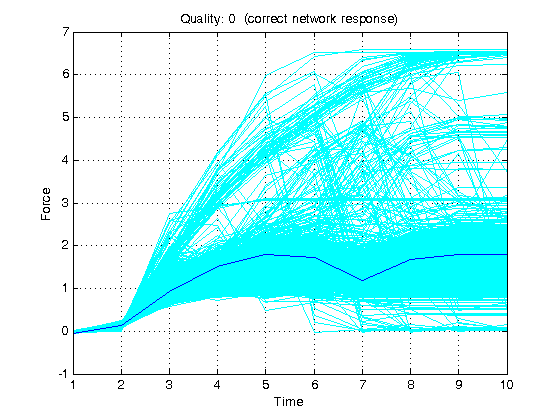Industrial diagnostic of compressor connection rod defects
Neural Networks course (practical examples) © 2012 Primoz Potocnik
PROBLEM DESCRIPTION: Industrial production of compressors suffers from problems during the imprinting operation where a connection rod is connected with a compressor head. Irregular imprinting can cause damage or crack of the connection rod which results in damaged compressor. Such compressors should be eliminated from the production line but defects of this type are difficult to detect. The task is to detect crack and overload defects from the measurement of the imprinting force.
Contents
Photos of the broken connection rod


Load and plot data
close all, clear all, clc, format compact % industrial data load data2.mat whos % show data for class 1: OK figure plot(force','c') grid on, hold on plot(force(find(target==1),:)','b') xlabel('Time') ylabel('Force') title(notes{1}) % show data for class 2: Overload figure plot(force','c') grid on, hold on plot(force(find(target==2),:)','r') xlabel('Time') ylabel('Force') title(notes{2}) % show data for class 3: Crack figure plot(force','c') grid on, hold on plot(force(find(target==3),:)','m') xlabel('Time') ylabel('Force') title(notes{3})
Name Size Bytes Class Attributes force 2000x100 1600000 double notes 1x3 222 cell target 2000x1 16000 double
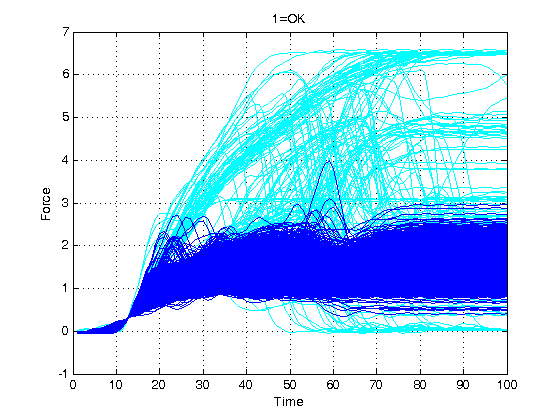
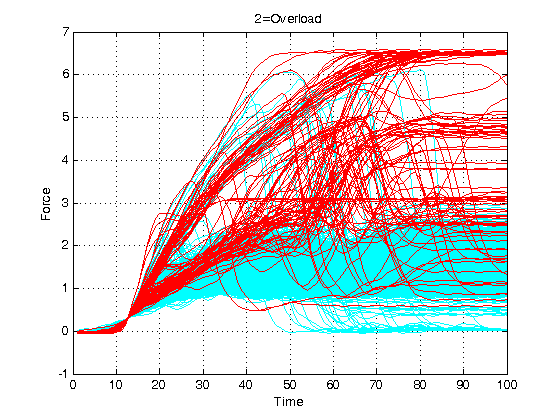
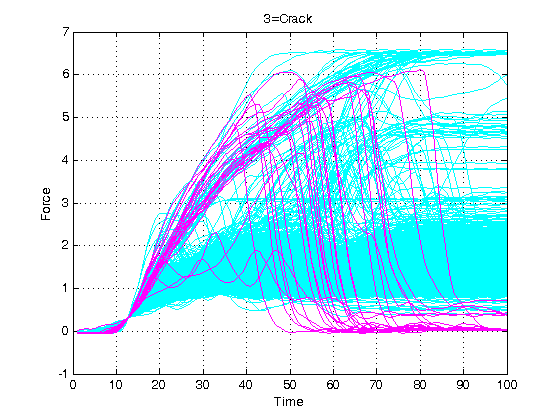
Prepare inputs: Data resampling
% include only every step-th data step = 10; force = force(:,1:step:size(force,2)); whos % show resampled data for class 1: OK figure plot(force','c') grid on, hold on plot(force(find(target==1),:)','b') xlabel('Time') ylabel('Force') title([notes{1} ' (resampled data)']) % show resampled data for class 2: Overload figure plot(force','c') grid on, hold on plot(force(find(target==2),:)','r') xlabel('Time') ylabel('Force') title([notes{2} ' (resampled data)']) % show resampled data for class 3: Crack figure plot(force','c') grid on, hold on plot(force(find(target==3),:)','m') xlabel('Time') ylabel('Force') title([notes{3} ' (resampled data)'])
Name Size Bytes Class Attributes force 2000x10 160000 double notes 1x3 222 cell step 1x1 8 double target 2000x1 16000 double
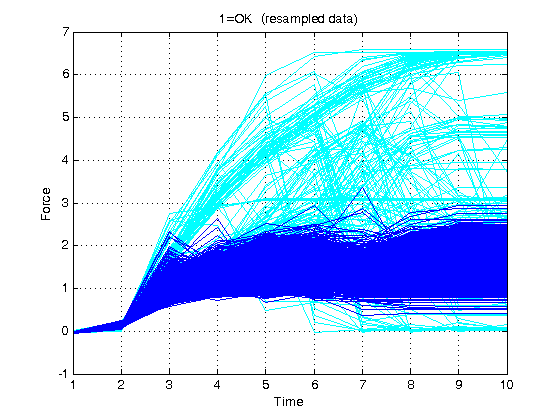
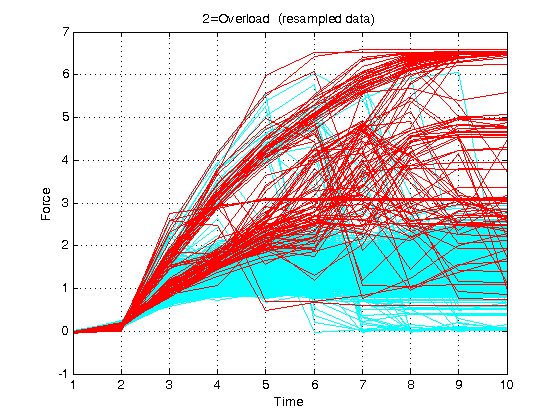
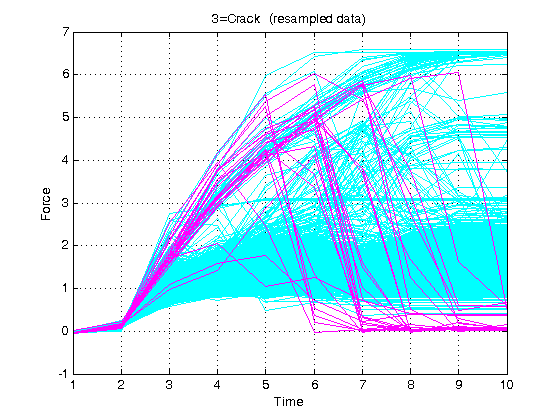
Define binary output coding: 0=OK, 1=Error
% binary coding 0/1
target = double(target > 1);
Create and train a multilayer perceptron
% create a neural network net = feedforwardnet([4]); % set early stopping parameters net.divideParam.trainRatio = 0.70; % training set [%] net.divideParam.valRatio = 0.15; % validation set [%] net.divideParam.testRatio = 0.15; % test set [%] % train a neural network [net,tr,Y,E] = train(net,force',target');
Evaluate network performance
% digitize network response threshold = 0.5; Y = double(Y > threshold)'; % find percentage of correct classifications correct_classifications = 100*length(find(Y==target))/length(target)
correct_classifications = 99.7500
Application
% get sample random_index = randi(length(force)) sample = force(random_index,:); % plot sample figure plot(force','c') grid on, hold on plot(sample,'b') xlabel('Time') ylabel('Force') % predict quality q = net(sample'); % digitize network response q = double(q > threshold)' % comment network respons if q==target(random_index) title(sprintf('Quality: %d (correct network response)',q)) else title(sprintf('Quality: %d (wrong network response)',q)) end
random_index =
1881
q =
0
